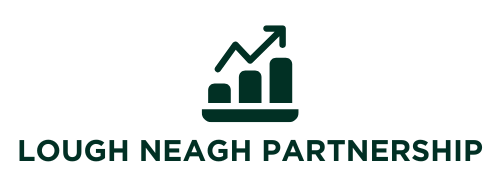Table of Contents
ToggleIn a world where software options multiply faster than a rabbit on a caffeine high, navigating the digital landscape can feel overwhelming. Whether you’re a seasoned techie or someone who still thinks “the cloud” is just a fluffy thing in the sky, this comprehensive software guide is your trusty compass.
Overview of the Comprehensive Software Guide
This guide offers insights into various software categories, including productivity tools, design applications, and cybersecurity solutions. Readers find structured comparisons and detailed analyses, simplifying selection processes across different needs.
Challenges in identifying suitable software often lead to decision fatigue. By breaking down options, the guide ensures clarity and helps users make informed choices without feeling overwhelmed. Step-by-step recommendations and practical examples illustrate each software’s benefits, enhancing understanding.
Specific categories include cloud storage solutions, which enable users to access files from anywhere and facilitate collaboration. Creative software applications support graphic design and video editing, catering to both professionals and hobbyists. Additionally, productivity suites streamline task management, improving organization and efficiency.
Some readers may seek insights into pricing models across software types. The guide provides transparent pricing comparisons, empowering users to select options that fit their budgets. Migration tips assist in transitioning between software, reducing disruption for businesses and individuals.
Security software remains a priority for digital safety. Detailed assessments highlight essential features like encryption, firewalls, and malware protection, ensuring users can secure their devices effectively.
Regular updates keep the content relevant as technology evolves. By addressing both contemporary needs and emerging trends, this guide remains a valuable reference for anyone navigating software choices in today’s digital landscape.
Key Features and Benefits

The comprehensive software guide highlights significant features and benefits that users value. These aspects contribute to selecting the right software for diverse needs.
User-Friendly Interface
A user-friendly interface enhances accessibility, making it easier for individuals to navigate the software. Intuitive layouts reduce the learning curve, allowing users to get started quickly. Clear menus and logical organization streamline tasks, promoting efficiency. Compatibility with various devices ensures consistency in user experience. Additionally, regular updates improve usability, addressing potential issues and integrating user feedback.
Versatile Functionality
Versatile functionality caters to a broad range of tasks, meeting users’ diverse requirements. Integration with other tools promotes seamless workflows, facilitating collaboration among teams. Customization options let users tailor the software to specific needs, enhancing personal relevance. Multiplatform support provides flexibility, enabling access across devices and operating systems. Workflow automation features further increase productivity by simplifying repetitive tasks, allowing users to focus on critical projects.
Topics Covered in the Guide
This guide addresses essential topics that empower users in their software selection journey.
Software Development Practices
Software development practices focus on strategies that streamline the creation and maintenance of software. Agile methods promote iterative progress through collaboration and flexibility. Continuous integration and deployment ensure that teams deliver updates swiftly and reliably. Code review processes enhance quality by allowing peers to provide constructive feedback. Utilizing version control systems like Git maintains organization and tracks changes effectively. Testing frameworks support a robust quality assurance process, ensuring functionality aligns with user needs. Overall, these practices result in higher efficiency, improved software quality, and better team collaboration.
Project Management Tools
Project management tools facilitate planning, executing, and monitoring projects efficiently. They support task assignment, prioritization, and deadline tracking to promote accountability. Popular options like Trello, Asana, and Jira offer various features catering to different team needs. Gantt charts provide visual timelines for project completion, while Kanban boards enhance workflow visualization. Integration options with other software enhance collaboration across teams. Reporting functionalities allow for data analysis and progress tracking, enabling informed decision-making. By utilizing these tools, teams can improve communication, optimize resource allocation, and stay on track to meet project goals.
Recommended Software Solutions
Exploring the right software solutions can streamline processes and enhance productivity. This section outlines ideal software for businesses and individuals.
For Businesses
Project management software such as Asana, Trello, and Monday.com supports task allocation and tracking progress. Communication tools like Slack and Microsoft Teams facilitate team discussions and file sharing. Additionally, CRM solutions such as Salesforce and HubSpot improve customer interactions and data management. For financial needs, tools like QuickBooks and Xero simplify invoicing, bookkeeping, and financial reporting. Human resources software, including BambooHR and Gusto, automates employee management tasks. Utilizing these solutions enables businesses to optimize their operations and drive success.
For Individuals
Creative software like Adobe Creative Cloud and Canva empowers users in graphic design and video editing. Productivity tools such as Todoist and Evernote assist individuals in managing tasks and organizing notes. For secure file storage, platforms like Google Drive and Dropbox offer easy access and collaboration features. Fitness applications like MyFitnessPal and Strava support personal health and wellness goals. Budgeting tools like Mint help individuals manage finances effectively. Choosing the right software enhances personal productivity and creativity, catering to diverse needs.
Comparison of Different Software Options
Comparing different software options helps users make informed decisions based on specific needs and preferences. For productivity, tools like Asana and Trello excel at project management. Asana offers robust features for task assignments, while Trello uses a visual board format for easy progress tracking.
In the realm of communication, Slack and Microsoft Teams serve distinct functions. Slack emphasizes integration with various tools, enhancing collaboration. Microsoft Teams combines chat and video conferencing, making it ideal for team meetings and discussions.
Creative tasks benefit from options like Adobe Creative Cloud and Canva. Adobe provides professional-grade tools for graphic design and video editing. In contrast, Canva simplifies design with its user-friendly interface, suitable for non-designers.
For file management, Google Drive and Dropbox stand apart. Google Drive offers seamless collaboration through real-time editing features. Dropbox focuses on secure file storage and easy sharing capabilities, catering to both individuals and businesses.
Financial management software shows notable diversity as well. QuickBooks stands as a comprehensive solution for accounting and invoicing. On the other hand, Xero presents cloud-based accounting tailored for small to medium-sized businesses.
When evaluating cybersecurity, software like Norton and McAfee offers essential protection against threats. Norton excels in speed and performance, while McAfee emphasizes a user-friendly experience.
Reviewing these software options aids in understanding each tool’s strengths and weaknesses. Choices often hinge on user-specific needs, from budget constraints to desired functionalities. Making well-informed choices ensures optimal software selection for personal or business use.
Navigating the software landscape doesn’t have to be daunting. With the right guidance and resources at hand, users can confidently select tools that align with their needs. This comprehensive software guide empowers individuals and businesses alike to make informed decisions, ensuring they choose the best solutions for productivity and creativity.
By understanding the features and benefits of various software options, users can streamline their workflows and enhance their overall efficiency. As technology continues to evolve, staying updated with the latest trends and tools remains crucial. Embracing this guide will not only simplify the software selection process but also foster a more productive and secure digital environment.








